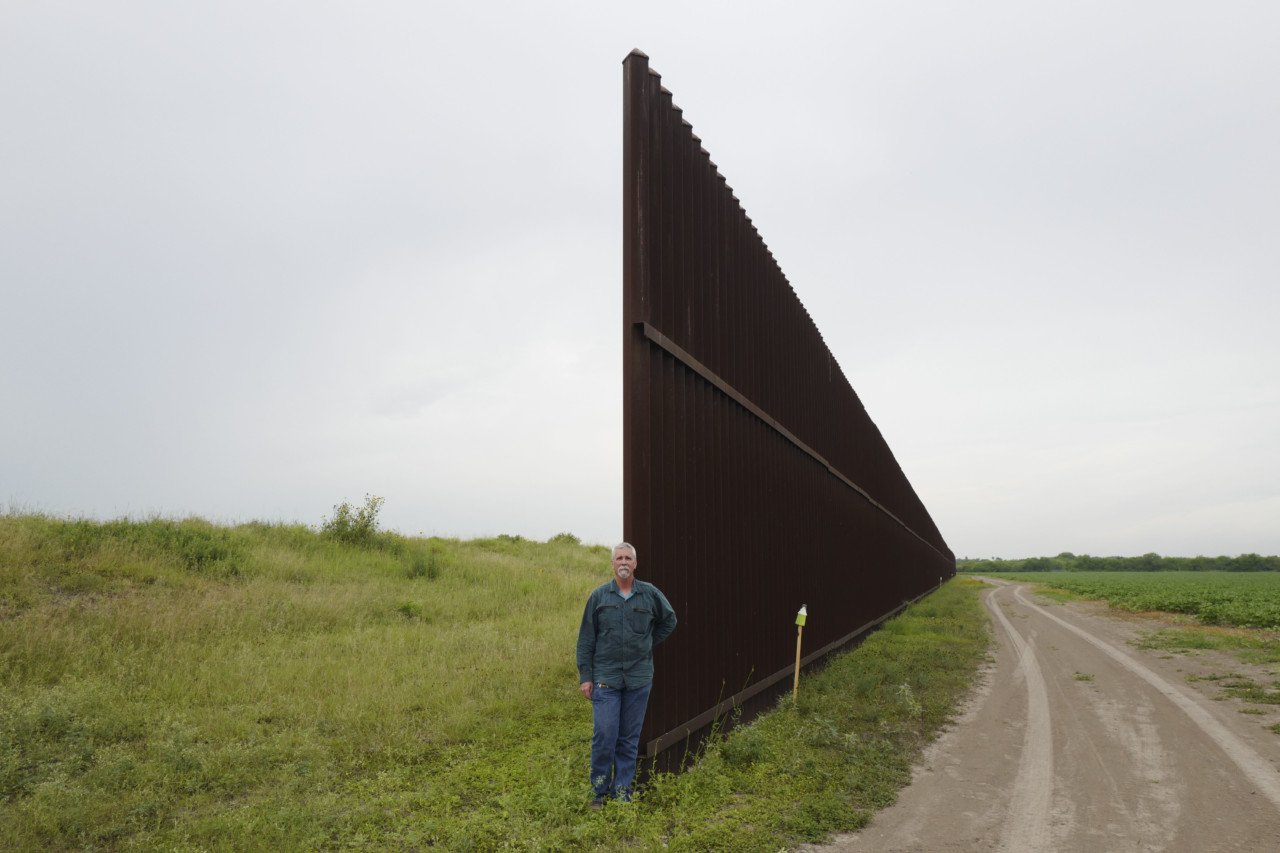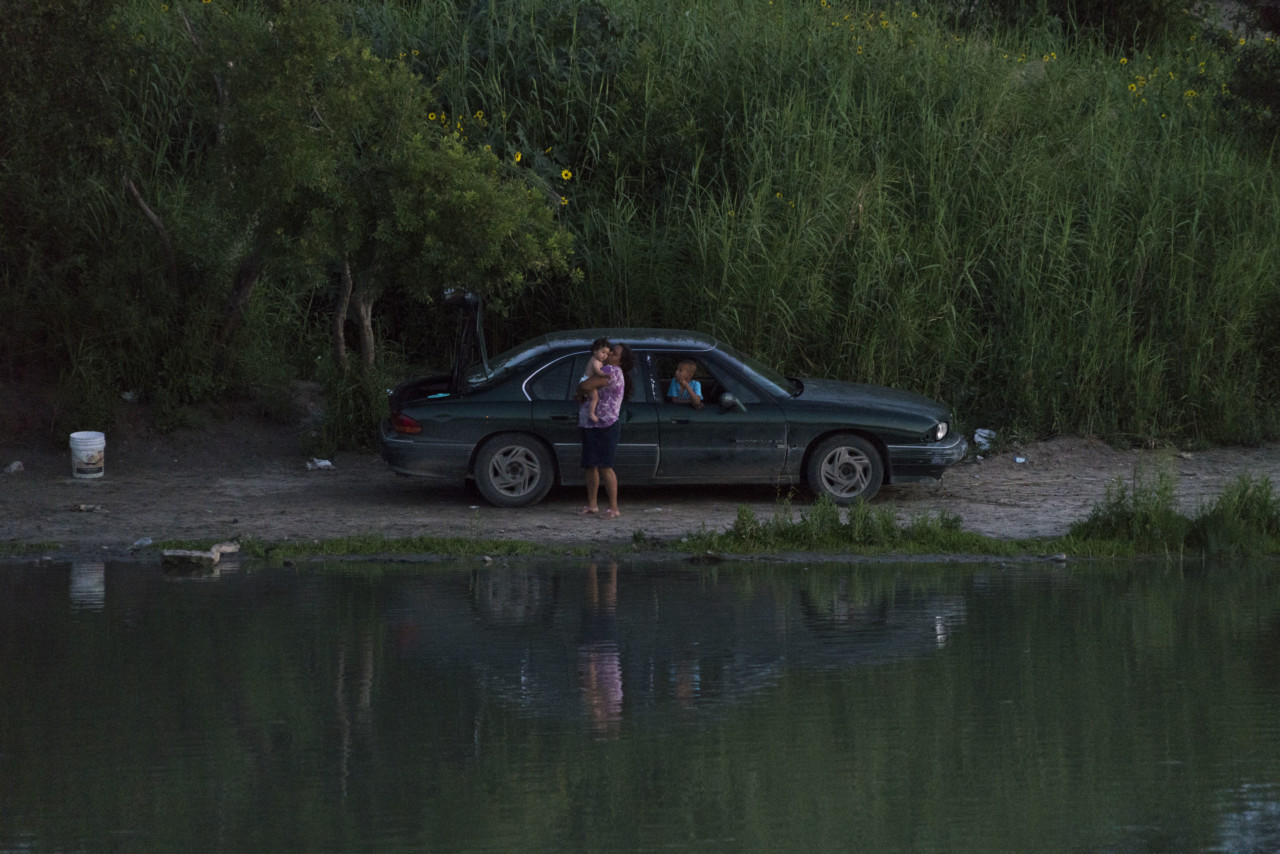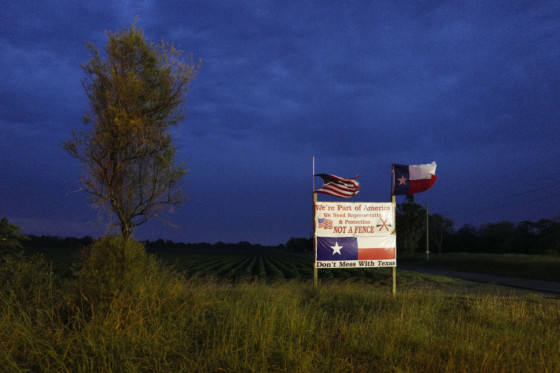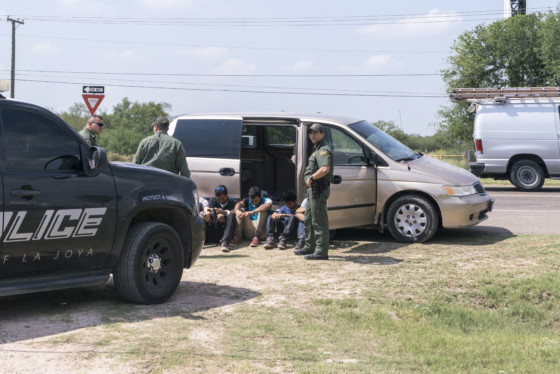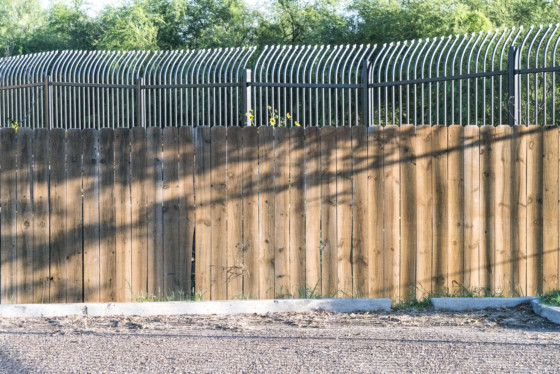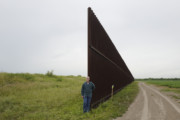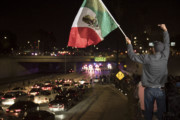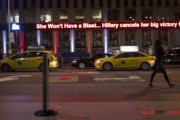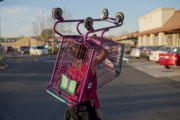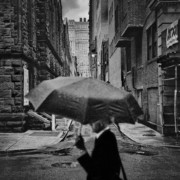On The Fence: The Border Towns of Trump’s Wall
Peter van Agtmael meets the residents of towns on the U.S.-Mexico border.
This article was published in 2016.
In June 2015, presidential candidate Donald Trump announced that if elected, he would initiate the construction of a border-long wall between Mexico and the US. It’s his proposed solution to manage the inflow of illegal immigrants with an actual physical barrier along the southern border of the United States, and emblematic of his resolutely anti-immigration stance.
Earlier this year, Magnum’s Peter van Agtmael visited two Texas border towns, Laredo and Brownsville, the latter of which is ranked as one of poorest cities in America. Laying on the north-eastern side of the natural border of the Rio Grande river, the towns carry strong ties to Mexican communities.
Trade between the towns has been booming since 1848. Laredo is a busy customs district, which created about $280 billion in business (approx. 7% of all US trade) in 2014. It is currently 96% Hispanic and many of its residents commute daily to Mexico for work and leisure, and have strong cultural or familial ties.
Partial walls across the border already exist in the form of rusty 18-foot-high gates, built on property well within US territory. The intermittent fences are have many large gaps, necessary so far to allow free passage for residents, farmers, and local wildlife.
Currently, the Border Patrol guards these holes but a sealed-off wall, as proposed by Trump, would supposedly prevent any movement between property situated between wall and the Rio Grande – the true border.
According to some Border Patrol agents, a newer, bigger wall wouldn’t prevent smugglers who profit from sneaking people across the border; they’d need to find other ways to keep business going.
Whilst photographing the towns, Magnum photographer Peter van Agtmael documented his encounters with border patrol police, wildlife officers, gravediggers, and opinionated residents, including the famed Brownsville resident Pamela Taylor, an 88-year-old English-American woman who married a Mexican-American and moved to the US. She opposes illegal immigration but also feels a border wall would be an ineffective deterrent and an aesthetic blight. At one point, she was told by the US Army Corps of Engineers that a fence would go straight through the middle of her living room. After difficult negotiations, they reached a deal where there would be a large gap in the fence north of her property. It would be manned by the Border Patrol agents that run up and down her land and along the river. The effect is that her property has become a corridor for migrants. She has a stand of drinks in front of her house for thirsty migrants passing through, but also in clear sight are a shotgun and a border patrol bullet-proof vest.
"The communities on both sides of the wall are deeply intertwined"
- Peter van Agtmael
Despite the official economic rankings, Brownsville and Laredo seem to be just like any other US town. “Brownsville did not appear especially poor. Cosmetically, it looked like any number of cities and communities I’ve visited in my travels though the States,” Agtmael says. “Poverty in America is relatively less conspicuous than in many parts of the world. It often manifests itself through small, decayed tract housing, a largely boarded up commercial center of the old town, and outskirts filled with cheap chain stores. Given Brownsville’s role as a border town it still had a relatively vibrant downtown by the border crossing.”
Agtmael has much experience shooting impoverished communities. Since 2006 he has primarily covered the 9/11 wars and their consequences, working extensively in Iraq, Afghanistan and the USA. He is careful about the way he approaches the topic. “As time goes by I become increasingly aware of being an outsider and how my perceptions are in many ways shaped by the limitations of photography and the difficulty to achieve meaningful intimacy in a short space of time, “ Agtmael says. “I try and reject making a spectacle out of poverty. There’s a lot of casual sentimentality in photography that seems patronizing and is endlessly repetitive. I try to be mindful and reflect what I’m seeing as organically as possible but no doubt I have plenty of blind spots as well.”
"I try to be mindful and reflect what I’m seeing as organically as possible"
- Peter van Agtmael
In the nearby town of Zapata, a small cemetery lies with the unidentified bodies of those who died crossing. Shifting migrant patterns and an improving Mexican economy have meant the number of deadly crossings have dropped in Zapata at least, in recent years. Roberto, a local gravedigger says, “This year we haven’t had any. In 2015, I think we had one. It’s been less and less. Maybe they changed locations? The border down in Mexico is too dangerous. From what I know, [the cartels] are charging them more than they used to before.”
For residents whom it would affect, the Republican candidate’s wall seems more of a symbolic, politicized gesture. To them, the proposed construction is the embodiment of the US’s anti-immigrant ideology–Trump is attacking their demographic. “The [current] border wall feels very arbitrary. It stops and starts. It’s easy to bypass,” explains Agtmael. “There are vast sections where it doesn’t exist. The communities on both sides of the wall are deeply intertwined.” Building a wall between them would cut this on-going dialogue that has shaped the identity of border towns. It remains to be seen how either side would fare if the holes were closed up for good.


